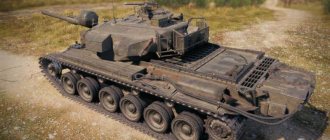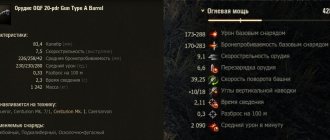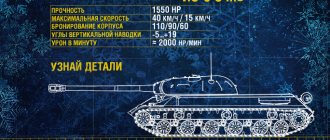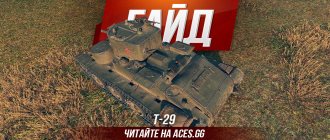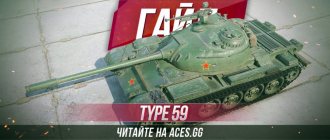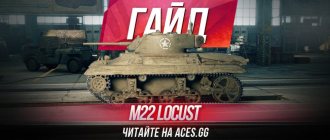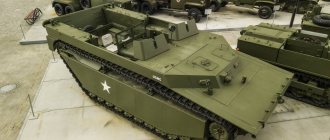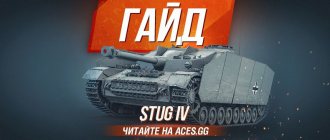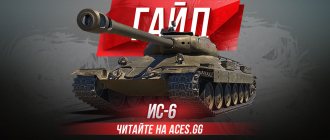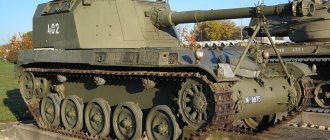This dangerous predator used to live in rocky deserts and hot jungles, but now it is found even among the polar ice. Not the fastest, but very dynamic and maneuverable, it confidently hunts in any terrain.
Meet the wild “Aussie” Centurion Mk. 5/1!
Its single bite may seem weak, but its attacks rain down with the frequency of a tropical rainstorm, and its sharp teeth easily pierce the tough hide of its prey.
Each container contains a random reward from the list OR with a 3% probability a Centurion Mk. 5/1:
- VIII Centurion Mk. 5/1 RAAC + slot in the Hangar. ATTENTION: the chance of a car falling out is 3%.
- Up to 25 epic boosters + up to 3 certificates for 28,000 + up to 20 parts of a certificate for 24 hours of a premium account.
- Up to 25 rare boosters + up to 4 certificates for 2300 + up to 50 parts of a certificate for 9 hours of a premium account.
- Up to 25 regular boosters + up to 30 certificates for 200 + up to 100 parts of a certificate for 1 hour of a premium account.
Due to legislation, these packs are not available to players in Belgium.
TTX Centurion mk. 5/1 RAAC
Dynamics
| Maximum speed | 50 km/h |
| Power density | 18.63 hp/t |
| Chassis traverse speed | 36 degrees/sec. |
| Turret traverse speed | 36 degrees/sec. |
Vitality
| Number of units strength | 1400 units |
| Hull armor | 120 / 50 / 38 mm |
| Tower armor | 254 / 88 / 88 mm |
Firepower
| Average one-time damage | 230 units |
| Average armor penetration | 226 mm |
| Mixing time | 2.3 s |
| Gun spread | 0.33 m |
| Ammunition | 65 pcs. |
Review
| View radius | 400 m |
Crew skills of Centurion mk. 5/1 RAAC
Before upgrading the crew's perks, you need to study the strengths and weaknesses of the tank. Recommended skills that need to be upgraded step by step for the crew:
1 perk:
- commander - “sixth sense”;
- gunner - “smooth rotation of the turret”;
- driver mechanic – “smooth ride”;
- loader - “radio interception”;
2 perk:
- commander - “combat brotherhood”;
- gunner - “combat brotherhood”;
- driver mechanic - “combat brotherhood”;
- loader - “combat brotherhood”.
3 perk:
- commander - “eagle eye”;
- gunner - “camouflage”;
- driver mechanic - “disguise”;
- loader - “camouflage”.
4 perk:
- commander - “camouflage”;
- gunner - “sniper”;
- driver mechanic – “king of off-road”;
- loader - “non-contact ammunition rack”.
Centurion mk. The 5/1 RAAC is a classic medium tank, but it has advantages compared to single-tier vehicles. The Briton not only has an accurate weapon with good armor penetration, it also boasts a large viewing radius. This means that first of all it is necessary to study “radio interception” and “eagle eye”. It is also important to study the brotherhood of battle with the entire crew. This will improve all tank characteristics by 5%. Also, do not forget that this is a medium tank, and it is vital for it to have good stabilization of the gun in motion. You can improve this indicator using the “smooth move” and “smooth turret rotation” skills.
Equipment
Centurion mk. The 5/1 RAAC has good armament, but reloading leaves much to be desired. This is the most important parameter that needs to be improved. Otherwise, everything is installed as standard for this class of equipment:
- Rammer. It will speed up the reloading of the gun, which will significantly affect the firepower of the British.
- Coated optics. The tank has a good viewing radius. Even some light tanks do not have the 400 meter mark. With the help of optics, you can significantly improve the viewing radius, which will allow you to overexpose many equipment in the game.
- Vertical stabilizer . The Briton shows good results in shooting on the move, but with the stabilizer installed it will become more than comfortable.
As an alternative, you can replace the stabilizer with improved ventilation. The tank will become a little worse at shooting while moving, but all the characteristics of the crew will improve by 5%.
Booking Centurion mk. 5/1 RAAC
Despite the fact that it is a medium tank, the Centurion mk. 5/1 RAAC has good frontal armor.
The medium tank is quite armored, so it can be used in aggressive combat. Of course, this applies more to single-level equipment. But the turret can also tank high-level shells. The only weak spot is the commander's hatch, but it is small in size, so it will be quite difficult to target it. The vertical declination angles of the gun -10 degrees help to tank comfortably with the turret. In some cases, you can use the sides, since the armor provided allows you to deflect projectiles, but only at the right angles. The upper frontal piece can also block damage, but only with a single-level technique. High level tanks will break through this place.
In general, we can say that the British has good hull and turret armor, and the turret is so armored that it can safely hold back shells from level 10 tanks. The hull is less armored, but for playing at the top it is enough to replace a heavy tank on the 1st line.
Historical reference
Main article
:
History of the Centurion Mk.
7/1 The combat debut of the Centurion tanks took place in Korea. Military operations against North Korean troops were officially carried out under the auspices of UN peacekeeping forces, the bulk of which were Americans. However, American troops were slightly "diluted" by the military contingents of their allies. The Hussars disembarked at Busan on 14 November 1950 in support of the British 29th Independent Brigade. The 8th Hussars immediately headed north by rail and soon arrived in the North Korean capital of Pyongyang.
During the harsh winter of 1950-51, the 8th Hussars learned the difficulty of using tanks in frosts far worse than those they had encountered in the North German Plain. At night, the Centurions were placed on bales of rice straw to prevent their steel tracks from freezing to the ground. Otherwise, the tank would be completely immobilized, and when trying to free itself, the main clutch discs would burn out. Under such extreme conditions, rods and towing cables broke, lubricant thickened, and engine shutdowns were common as water droplets in the fuel lines turned to ice and clogged them. Tank engines had to be started approximately every 30 minutes, and each mechanism had to be operated in turn to prevent them from freezing. The auxiliary engine was constantly running in a desperate attempt to warm up the fighting compartment; the driver had no source of heat at all other than his sleeping bag. Batteries burst due to extreme cold. Even with all this, the Centurions performed well in this theater of operations, for which they were never expected, and there were few problems with materiel. The crews suffered more from the cold than the tanks.
At the Battle of the Imjin River in April 1951, the Centurions of the 8th Hussars earned long-lasting glory when their tanks heroically covered the withdrawal of the 29th Brigade during the Chinese Spring Offensive. In October the 8th Hussars took part in "Operation Commando". The terrain was terrible even by Korean standards, and proved a serious challenge for the Centurions. When attempting to climb steep hills, tanks lost their tracks, and many Centurions were damaged by mines or stuck in muddy rice fields.
Despite the difficulties, several Centurions reached the intended heights, from which they dominated the surrounding area and bombarded the Chinese positions with accurate fire from their 20-pounder guns. The Centurions' ability to climb steep slopes and the unrivaled accuracy of their fire earned them general praise. Paying tribute to the 8th Hussars at their departure ceremony from Korea, Major General John O'Daniel, commander of the American First Corps, said: “With their Centurions, the men of the 8th Hussars created a new type of tank warfare. They taught us that where a tank can go, that’s its land. Even the tops of the mountains."
How to play on Centurion mk. 5/1 RAAC
The gameplay will depend only on the level of the opponent. When playing in the top, it will be most comfortable to conduct positional firefights on terrain, since Centurion mk. 5/1 RAAC has a monolithic turret. The vertical declination angles of the gun will allow only the turret to protrude, but it is worth noting the armored hull, namely the upper armor plate. This part will also block projectiles. Among city buildings you can tank with sides, but an enemy with greater armor penetration can still penetrate them. It is very important to rotate the body at the correct angles. The British turret is located closer to the front of the hull, this will worsen tanking on the side, since the tracks will have to be exposed. And these places are traditionally weak for this nation.
As for weapons, one-time damage is 230 units. can be called average for the 8th level, but armor penetration with a basic 226 mm shell will allow it to penetrate almost all tanks of the same level and many of a higher level . The gun is quite accurate, with good stabilization, but the rate of fire leaves much to be desired, so the “rammer” equipment must be installed first. In general, we can say that it will be comfortable to fight with such weapons even at the bottom of the list, but you should not use aggressive tactics against high-level equipment. In such situations it is better to be in the 2nd and 3rd lines.
The tank's visibility is phenomenal , so it can easily replace light vehicles in battle. To improve your performance to the maximum, it is recommended to upgrade all the necessary perks and install the appropriate equipment. As a result, the British will be able to spot the enemy from more than 450 meters away. Centurion mk. The 5/1 RAAC does not have a powerful engine, so it will not be able to actively shine like a light tank. To use your privileges, it is best to use the tower's features here too. You can shine while leaving the terrain, thereby protecting yourself during reconnaissance.
The Briton's dynamics are weak , so he won't be able to quickly drive to positions. But with such data, it can easily withstand heavy tanks, while its characteristics are similar to the heavy tank of this nation, Caernarvon. If the player wants to break through the flanks, then this is best done in the 2nd line, preferably using an armored turret and sides. Of course, reloading is not as fast as we would like, but the main advantage is armor penetration with a basic projectile. The tank is premium, so it will receive silver mainly for damage. It is worth noting that for a tier 8 medium tank, Centurion mk. 5/1 RAAC earns an average of 45,000 silver, which is a good figure.
History of creation
History of creation
Medium tank "Centurion" Mk.5/2 on display in one of the British museums
In 1943, the British General Staff developed tactical and technical requirements for a cruising tank capable of fighting the latest representatives of the German armored “menagerie”. The thickness of the frontal armor of a promising vehicle was specified to be at least 5 inches (125 mm) and was determined by the penetrating ability of an 88-mm German cannon projectile. The thickness of the sides was supposed to be 60% of the frontal armor. It was assumed that the shape of the hull bottom would reduce the damaging effect of anti-tank mines. The chassis was planned to be covered with bulwarks to protect against faust cartridges. In addition, the designers were instructed to install the Meteor gasoline engine - a tank version of the famous Merlin aircraft engine, which was equipped with the legendary Spitfires. The tank gun had to be able to hit Tigers, and the ammunition load included armor-piercing sub-caliber shells. Vehicle mobility on rough terrain was given more importance than achieving high speeds on the highway.
The upper limit of the tank's mass was determined to be 40 tons.
The development of the project, which received the code A41, began at the AEC company. The project, first of all, took into account the British’s own experience, but a number of design solutions were borrowed from German and Soviet tank builders[*An article published in the International Defense Review magazine and dedicated to the 25th anniversary of the adoption of the Centurion tank directly states that British technical intelligence specialists had a “hand” in its development.].
Just a month after the start of work, the designers came to the conclusion that it was impossible to fulfill all the requirements for armor protection within the specified mass of 40 tons. The General Staff set a new upper limit - 60 tons. Such a quick agreement of the military to a significant increase in the mass of the tank was explained quite simply: you can gain in weight, but lose in the time that will be needed to find design solutions and test them, while a machine capable the army urgently needed to resist the “tigers”.
The final terms of reference for the A41 project appeared in February 1944. In accordance with it, it was envisaged to install a 17-pounder cannon, one or two coaxial BESA machine guns of 7.92 mm caliber or a 20-mm Polsten cannon; Another BESA machine gun should have been mounted in a ball mount in the rear niche of the turret. It was necessary to create excess air pressure in the fighting compartment to reduce contamination by powder gases during firing and protect the crew from chemical warfare agents. Particularly stipulated was the abandonment of the machine gun in the vertical frontal plate of the hull and the replacement of the frontal plate itself with a flat monolithic armor plate.
When choosing the type of suspension, preference was given to a blocked Horstmann balancer suspension.
The power unit included a liquid-cooled Meteor gasoline engine and a manual transmission. The fuel tanks provided an estimated range of 170 km, but even at the project stage it was recognized as clearly insufficient (it seems that the British were more focused on Soviet requirements: for example, the range on the T-34-85 highway is 430 km, IS-2 is 220 km , while the “Panther” is 200 km, the “Tiger” is 100 km).
Evaluating the project, English experts came to the conclusion that instead of the “British Tiger” they got the “British Panther”, which, nevertheless, was also not bad at all.
The A41 project was given the green light. By May 1944, a wooden model was made; Based on the results of the evaluation of the mock-up commission, the General Staff ordered 20 pre-production samples. All prototypes were made of ordinary steel, not armored steel; the mass of the experimental tank was 45 tons. The first copy was ready in September 1944, the last in January 1945. In victorious May, when preliminary tests were completed, six new vehicles were sent to the continent for testing in combat units that had combat experience.
A prototype of the A41 tank with a 17-pounder cannon and a 20-mm Polsten automatic cannon. 1945
The second production tank "Centurion" Mk.I (A41*), manufactured by the Royal Ordnance Arsenal plant in Woolwich
"Centurion" Mk.1
The first production tanks, designated A41 “Star” (“Star”), entered service with the troops after the end of hostilities.
Soon their name was changed to “Centurion” Mk.1 [* “Centurion” was originally called the “support tank” A30, designed on the basis of the “Cromwell”. After its renaming to "Challenger", the name "Centurion" became vacant.] A total of 100 vehicles of the first modification were built.
The tank was designed according to the classical scheme: with a control compartment in the front part, a fighting compartment in the middle and a logistics compartment in the rear.
The body of the vehicle was welded, made of rolled armor plates; the side plates were installed with a slight camber outward for ease of arrangement of the chassis. There were local widenings on the roof of the hull in the area where the tower was located.
The thickness of the armor of the frontal part of the hull was 76 mm, the sides - 51 mm. The driver's position was located to the right of the tank's axis.
The three-man tower was cast; the roof of the tower was attached by welding. The tower had a slight slope of the walls and a slightly elongated rear part. The thickness of the frontal armor of the turret was 152 mm. The turret housed a 17-pounder (76.2 mm) Mk.V cannon and a 20-mm Polsten cannon (according to the designers’ plans, it was intended to combat light anti-tank guns), and the ball mount in the aft niche housed 7.92 -mm BESA machine gun. The vertical guidance angles of the main gun are from -10° to +20°. The commander and gunner's positions were located to the right of the turret axis, and the loader's position was to the left. The turret roof was equipped with a commander's hatch with a hinged lid and a loader's hatch with a double-leaf lid. There were hatches in the left wall of the turret and in the rear for ejecting spent cartridges.
Engine - 12-cylinder petrol engine "Meteor" with a power of 640 hp. Transmission: manual Merritt-Brown Z51R. Fuel tank capacity - 550 l. The power unit was a further development of the engine and transmission of the Cromwell and Comet tanks. The engine compartment was equipped with a fire protection system.
The chassis had six medium-diameter road wheels and two support rollers per side. A spring-balance suspension connected two road wheels into one bogie (three bogies per side). Cylindrical helical springs were used as elastic elements. The suspension was mounted outside the tank hull. Hydraulic telescopic shock absorbers were installed on the first bogies of each side.
The chassis was covered with three-section steel screens 6 mm thick.
The radio equipment included a VHF transceiver radio station, a tank intercom and equipment for connecting the TPU to a field telephone line.
To overcome water obstacles, a waterproof rubber cover with a metal frame was attached along the upper perimeter of the hull; when crossing rivers, the frame was raised using pneumatic cylinders. The tank hull was sealed.
Vehicle weight - 48 tons, crew - 4 people.
Centurion tanks: above - modification Mk.2, below - Mk.3
"Centurion" Mk.2
The first copy of the Mk.2 variant was produced in the summer of 1946. Unlike the previous model, its turret was welded, with a commander's cupola equipped with viewing devices providing all-round visibility. Instead of the 20-mm cannon, a traditional 7.92 mm BESA machine gun was installed, coaxial with the main gun, and an emergency hatch was located in place of the aft ball machine gun mount.
Ammunition - 70 shells for the cannon and 4000 rounds for the machine gun. The tank was equipped with a stabilization system for the main armament in two planes with electric machine drives.
In total, more than 700 of these machines were built.
"Centurion" Mk.3
The Mk.3 tanks were a variant of the Mk.2, armed with a 20-pounder (83.8 mm) Mk.l gun. Their mass production began in 1947. All vehicles of the Mk.2 modification in 1951 - 1952 were upgraded to the Mk.3 level. On Centurion tanks, starting with this variant, six 51-mm grenade launchers were installed in the front of the turret for firing smoke grenades.
FV201
The requirements for the A41 project assumed the development of a cruising tank in accordance with the British “two-tank” doctrine, that is, the presence in the troops of infantry and cruising tanks of various designs with a clear delineation of their combat missions. At the same time, the military considered it necessary to unify a number of systems and units of infantry and cruiser tanks. The Tank Department of the General Staff strongly recommended such unification back in 1942, so in parallel with the A41 project, a version of an infantry tank with frontal armor increased to 6 inches (152 mm) was created. This work proceeded, as they say, neither shaky nor slow. Field Marshal Montgomery drew the line under them, when in July 1944 he put forward the idea of a universal tank that combined the qualities of infantry and cruising vehicles. In September 1946, the technical specifications for the FV200 were developed, which provided for the development of not only a tank, but also a flamethrower, bridge layer, armored personnel carrier and self-propelled guns on a single chassis.
Of all the British tanks, the Centurion was the most suitable for these tasks in terms of its characteristics. Its “universal” version was designated FV201. The tank's suspension was modernized, the hull walls were made vertical, the turret was equipped with an optical rangefinder, and the armament was reinforced with a second machine gun mounted on the left fender. The engine was equipped with an emergency start system. The crew has increased by one person.
As a result, designing a universal vehicle resulted in the creation of a heavy tank. By 1949, the British realized that to fight Soviet tanks of the same class, a gun of at least 120 mm caliber was required. The Centurion was not suitable for this, and the FV214, the Conqueror, was put into mass production.
Centurion Mk.3 tanks leave the factory floors
Experienced universal tank FV201
"Centurion" Mk.4
Fire support tank armed with a 95 mm howitzer.
"Centurion" Mk.5
At the end of 1952, the Mk.5 variant appeared, to which a significant number of Mk.3 tanks were upgraded. The BESA 7.92 caliber machine gun was replaced by the American 7.62 mm M1919A4 as part of the unification of small arms of NATO countries. In addition, the shape of the turret hatches was slightly changed, and a turret for the M1919A4 machine gun was mounted next to the commander's hatch. Instead of the aft turret hatch, a plug was installed to remove shell casings.
An unresolved problem for the Centurion developers was the small power reserve. On the fifth model, they tried to increase it by installing external fuel tanks in the rear part of the hull, but for a number of reasons it was considered more successful to use single-wheeled towed armored tank trailers that could hold 200 gallons (900 l). The weight of the trailer without fuel was 1.3 tons.
"Centurion" Mk.6
This model was a Mk.5, equipped with additional armor protection and a 105 mm L7 gun, long considered the best tank gun in the West. “Centurion” gave a start to life for this gun, which was installed on the American M-60 tanks, the German Leopard-1 tanks, the Swiss Pz-61 tanks and a number of others. The combat weight of the vehicle reached 51 tons. Subsequently, Mk.6 tanks were equipped with an IR sight and a 12.7-mm sighting machine gun.
"Centurion" Mk.7
Mk.7 tanks entered service with the British Army in 1954. Before this, all the work on modernizing the “centurions” was carried out by specialists, and the designers were already working on the Mk.7. On previous versions of the vehicle, the main attention was paid to refining the turret and armament, while on the “seven” - on the layout of the hull. The developers managed to increase the capacity of the internal fuel tanks, and more efficiently place the ammunition for the gun and the driver's controls.
Tank trailer for transporting fuel
"Centurion" Mk.5 with a 20-pound cannon. The machine is equipped with a bulldozer blade
"Centurion" Mk.8
In 1955, a new turret was developed for the Centurion. It was distinguished by a rotating commander's cupola with a double-leaf hatch, a new sight and an elastic installation of the gun trunnions, which reduced the likelihood of breakage during sharp impacts of the tank (the Germans first used a similar design solution on the Jagdpanther). The turret housed a periscope sight and a fire control panel. Now not only the gunner, but also the commander could fire from the cannon.
"Centurion" Mk.9
The Mk.9 tank entered service in 1959. The armor of the frontal part of the hull was strengthened, and most importantly, the firepower was sharply increased due to the installation of a 105-mm L7 cannon, which did not lead to major changes in the layout of the tank. The gun was equipped with an ejection device for purging the barrel after firing; the ejector was installed in the middle part of the barrel.
In the Mk.9/1 version, the tank was equipped with IR night vision devices, and on the Mk.9/2, along with a coaxial 7.62 mm machine gun, another 12.7 mm machine gun was installed in the gun mantlet, used for zeroing the gun at long distances.
"Centurion" Mk.10
Mk.10 was put into service in 1960. It was a modification of the Mk.8 tank, on which a 105-mm cannon and a commander’s cupola of a new design were installed. The Mk.10/1 variant had IR night vision equipment, the Mk.10/2 had a sighting 12.7 mm machine gun in a cannon mantlet.
Above: The Centurion is equipped with a folding waterproof casing for swimming across water obstacles. Below: demonstration of the swimming capabilities of the Centurion Mk.3 tank
"Centurion" Mk.11, Mk.12, Mk.13
Tanks of these variants were equipped with active night vision illumination devices (for the commander and driver), as well as equipment for underwater driving. Instead of a 7.62 mm machine gun coaxial with a cannon, a 12.7 mm machine gun was installed on them. The Mk.6/9/10 tanks were converted into the Mk.11/12/13 variants, respectively.
Serial production of Centurion tanks was carried out in Great Britain, Royal Order Factory Leeds, Royal Order Factory Woolwich and Vickers-Armstrong from 1945 to 1962. A total of 4423 vehicles were manufactured.
“Centurions” of various variants were in service with Australia, Austria, Denmark, Egypt, Israel, India, Jordan, Iraq, Canada, Kuwait, Lebanon, the Netherlands, Singapore, Somalia, Sweden, Switzerland (under the designation Pz-55 and Pz-57) . According to data at the beginning of 2000, these combat vehicles remained in the tank forces only in South Africa. More recently, in the late 1990s, they were withdrawn from service in Jordan, Israel, Sweden and Denmark. The Swedish "centurions" (290 tanks) were withdrawn from service as the Leopard-2A5 tanks arrived, the Danish - "Leopard-2A4", the Jordanian - "Challenger 1" (locally called "Al Hussein"), in Austria the towers served their service life tanks are installed in Alpine fortified areas and are used as long-term firing points.
Reservation scheme and main dimensions of the Centurion tanks Mk.9 and Mk.10
The thickness of the stern plates of the Centurion Mk tank is indicated in brackets. 9
Reservation of the bow part of the hull of the Centurion Mk.10 tank
Advantages and disadvantages
| Advantages | Flaws |
| armored tower | average one-time damage |
| armored corps | chassis rotation |
| gun elevation angles | frequent damage to ammunition racks |
| average armor penetration with a basic projectile | commander's hatch |
| viewing radius | |
| gun accuracy |
Features of the branch
British medium tanks up to level 7 are dynamic and maneuverable vehicles, the main flaw of which is the extremely weak hull armor. The small alpha strike is compensated by a high rate of fire and good visibility. But from level 8, the gameplay that has become the hallmark of British technology begins to take shape. The large size of the tanks is accompanied by weak dynamics and mediocre maneuverability, but in return the ST received strong turrets, a good penetrating gun and excellent vertical guidance angles. At the same time, the vehicles are distinguished by good accuracy and a good rate of fire, which makes them excellent support tanks.
